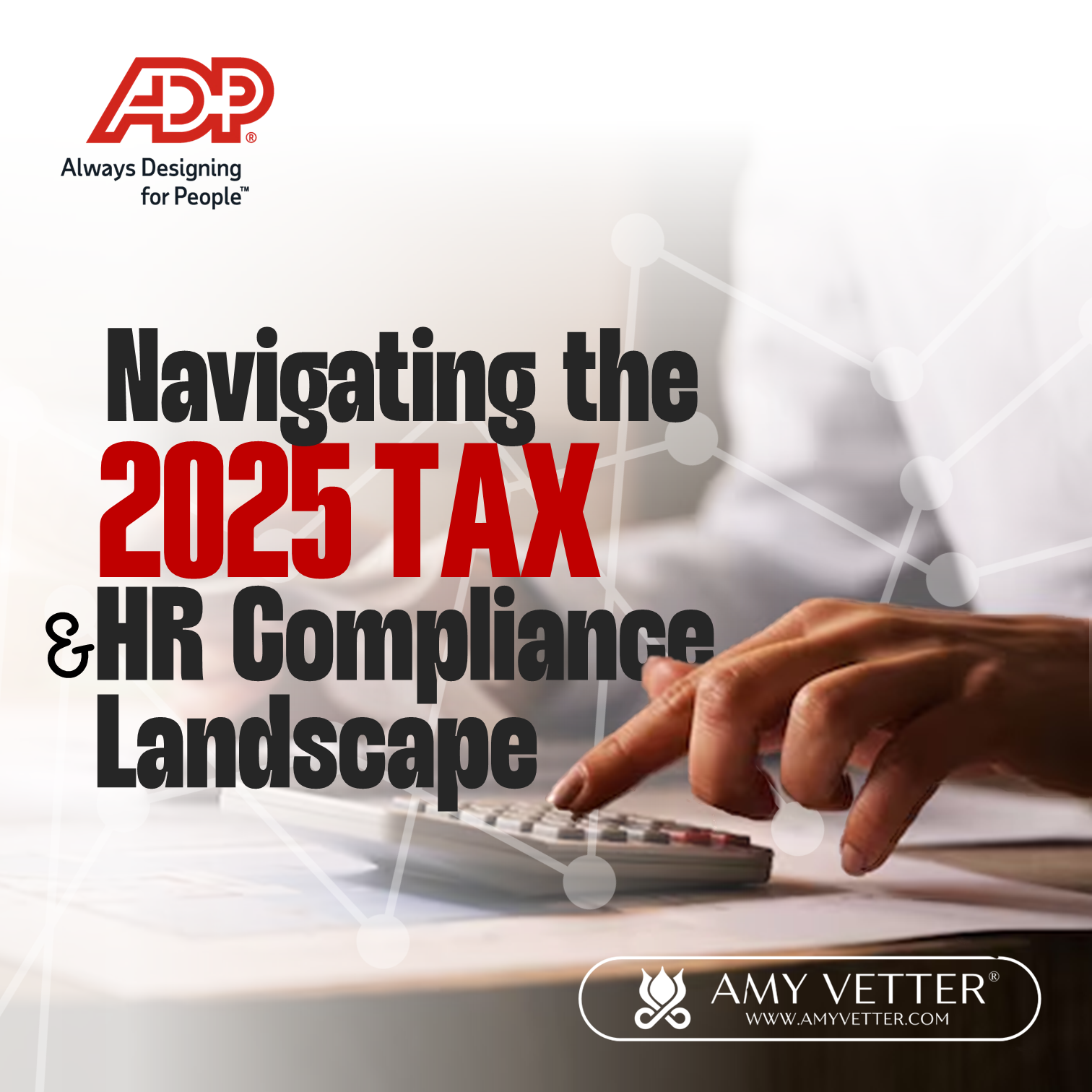Navigating the 2025 Tax and HR Compliance Landscape
Welcome to article four, the final article of our monthly series that dives deep into the world of taxes and employee retention. This series, sponsored by ADP, explores what is genuinely valuable, practical, and applicable advice to any leader looking to create a workplace where talent flourishes.
As the 2025 tax season begins, it’s important to stay informed about the latest updates in tax and HR compliance that may impact your clients. Recently, industry experts, including Jody Padar, Kelly Phillips Erb, Amy Miller, and Ron Ulrich, shared valuable insights at the ADP® Accountant Connect Summit. Here’s a summary of the key highlights to help your clients successfully navigate these changes.
New Administration
A new administration generally brings some uncertainty. However, for the 2025 tax season, most existing rules are expected to remain unchanged. Additionally, the anticipated extension of the Tax Cuts and Jobs Act (TCJA)—which would maintain current tax rates—and potential delays in regulatory guidance could affect how you advise your clients.
Retirement & Secure 2.0 Act
Here are some new requirements under the Secure 2.0 Act that businesses need to prepare for:
Automatic Enrollment: Starting January 1, 2025, all new retirement plans must implement automatic employee enrollment. This is a great opportunity to discuss employee benefits and retirement planning.
Increased Catch-Up Contributions: Employees aged 60 to 63 can now contribute up to 150% of the standard limit. Clients should encourage their employees to take advantage of this opportunity to save more for retirement.
Part-Time Employee Eligibility: Employees working 500 hours in the last two years must be allowed to participate in retirement plans starting January 1, 2025.
Saver’s Match: Beginning in 2027, plan participants with certain income limits can receive a $1,000 match from the Treasury.
Direct File Program
The IRS’s direct file program offers eligible taxpayers free tax filing. However, there are uncertainties surrounding the program’s future, funding, and scale beyond 2025. While it may help with basic tax filings, it cannot replace the invaluable expertise that CPAs provide and could increase the demand for advisory services.
Current Employment and Tax Trends
Here are a few compliance trends to monitor this year:
Paid Family and Medical Leave (PFML): More jurisdictions are adopting PFML policies. It’s important to note that federal tax credits may be available for employers that offer PFML.
Form 1099-K Updates: Be prepared for changes to reporting thresholds, which will decrease to $2,500 in 2025 and further to $600 in 2026.
Remote Work Implications: The SALT cap has led many individuals to relocate to lower-income tax states. This trend necessitates detailed discussions with clients regarding their business structure and related tax implications. Additionally, with limits on home office deductions, some employers are opting to reimburse employees for home office expenses.
Conclusion
Maintaining open communication about ongoing developments is crucial for small businesses and advisors.
If you’re interested in more takeaways from ADP's Accountant Connect Summit, the event is available for on-demand viewing.
The content of this blog is provided for informational and practical purposes only and should not be construed as legal or tax advice. The content is subject to change so please check with your tax or legal advisor for circumstances pertaining to your business. The content is provided with the understanding that ADP does not provide legal, tax or financial advice or other professional services. All ADP services are provided in accordance with applicable terms and condition.

